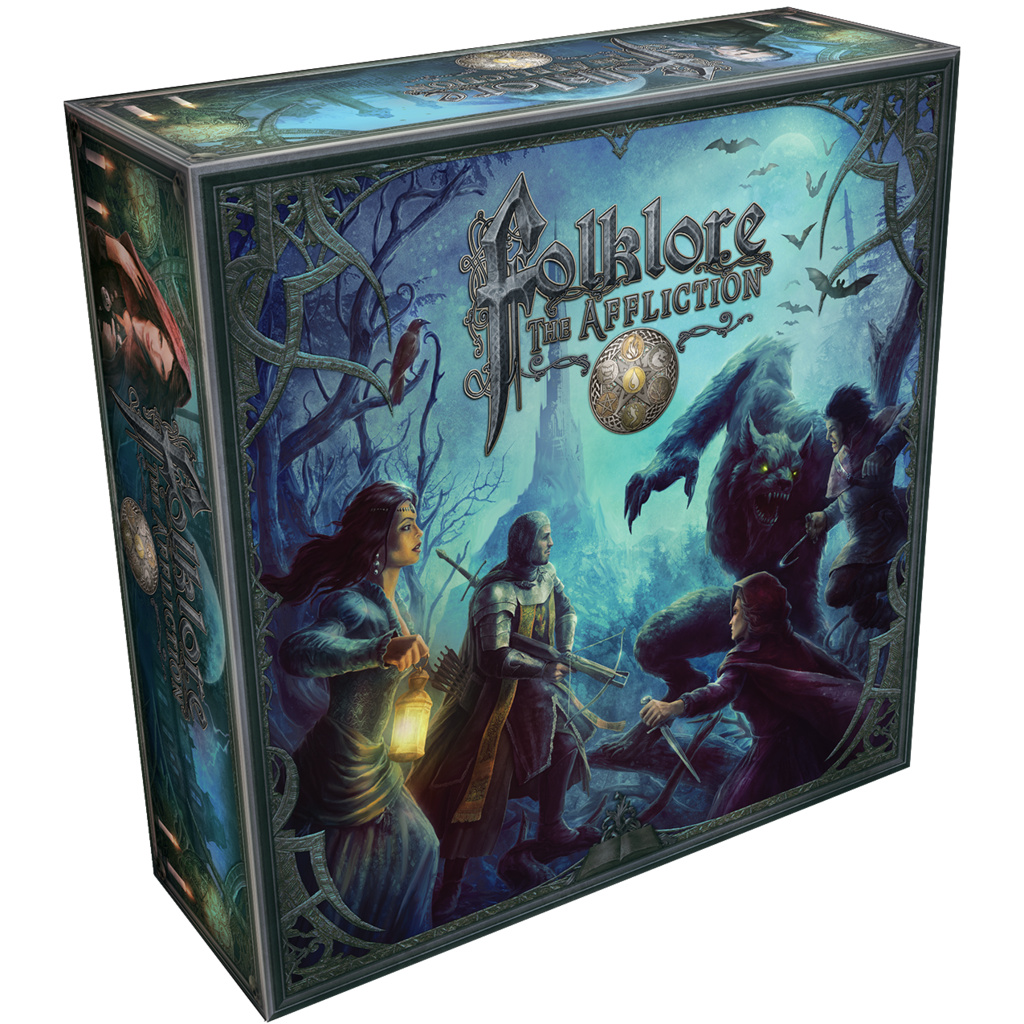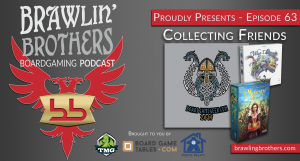Folklore the Affliction Review
Mean Mother Loving Servants of God! A Folklore the Affliction Review.
“So which are you? A faithless preacher? Or you a mean motherfucking servant of God?”
– George Clooney as Seth Gecko in “From Dusk ‘Till Dawn”.
Nicole Wakelin is correct. Vampires do not sparkle. Sometimes they have two left hands, but vampires never sparkle. Vampires are twisted, grotesque, monstrosities that feed upon and corrupt the human form in a way that is horrifying at a primitive level below even the subconscious. In reality though, they are an expression, a manifestation of, a cultural fear of physical corruption and death. Throughout human history, folklore has served as a way for humans to express and explain the things that terrify us the most, the unknown and unknowable. Myths and legends about werewolves are the product of man’s domestication and expansion into wild territories occupied by wolves. The idea of silver bullets killing a werewolf dates back a few centuries ago to southern France where a peasant farmer managed to take down a man eating wolf with one. We create myths as a way of coping with what we are incapable of understanding. Nobody likes a dangling plot thread.
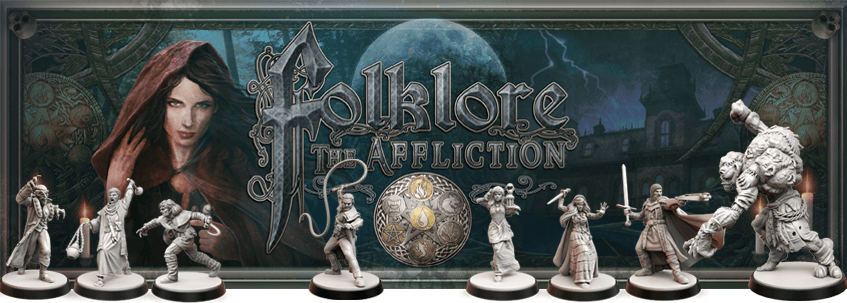
Silly subtitles aside, Folklore: The Affliction, takes direct inspiration from Gothic European folklore and mythology. We are talking about the pre-Disney tales popularized by the Brothers Grimm with a bit of Mary Shelly and Bram Stoker sprinkled in for good measure. For those of you who have enjoyed The Witcher books and video games, Folklore is channeling that type of world. The setting itself is some timeless east European-esque region called Kremel, that feels like it could be found in modern Hungary or southern Germany. There are tropes abound, complete with a religion that is basically a generic pre-Reformation Catholicism or possibly Greek Orthodox. The setting and many of the details are given a haziness that allows the audience to generally recognize the setting without focusing on the anachronisms that pop up at a steady pace. Ultimately, I find the setting to be appropriate for the folklore inspired plots that players navigate. Just don’t come in expecting something as thoroughly developed as what you may expect in a proper tabletop RPG or in the Witcher games/books. Folklore the game, like its namesake is just familiar enough to let you ignore the conflicting details and focus on the yarn.
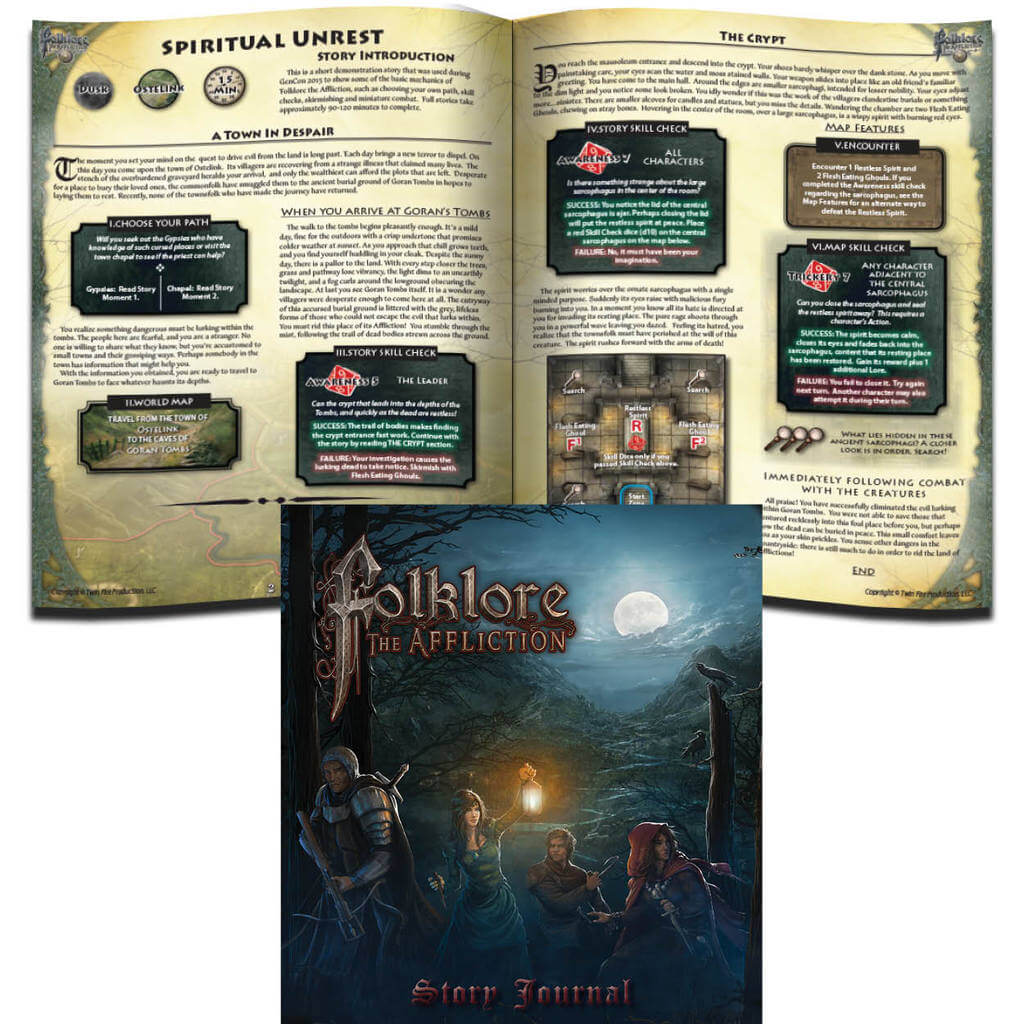 The beats of game play are an interesting echo of what can be found in Green Briar Game’s earlier title Grimslingers. In both games you play out a relatively on rails mission based RPG. You are given a story based directive (typically something like “go to X location”). You journey across the game map and encounter random story events and combat along the way. You arrive at your location for a nifty series of tests and/or story events. You are then given a new story based directive, wash, rinse, repeat. I know that sounds pretty dull, but in practice it works out quite well. In my earlier review of Grimslingers, I was pretty vocal that I felt the quasi-RPG narrative found in the game was its best attribute. For those of you who played through Grimslinger’s campaign, you will find a very familiar story telling system. If you haven’t played Grimslingers, I would compare Folklore to a mash up of Eldritch Horror and Mansions of Madness 2.0. Imagine Eldritch Horror except that every once in a while you have to pause the game and play out 15 minutes of story narrative and exploration on the Mansions of Madness game boards. Again, it sounds like a mess, but in practice it is compelling and addictive. The best compliment I have for Folklore is that its a game that is hard to walk away from, and when you do, its hard to stop thinking about.
The beats of game play are an interesting echo of what can be found in Green Briar Game’s earlier title Grimslingers. In both games you play out a relatively on rails mission based RPG. You are given a story based directive (typically something like “go to X location”). You journey across the game map and encounter random story events and combat along the way. You arrive at your location for a nifty series of tests and/or story events. You are then given a new story based directive, wash, rinse, repeat. I know that sounds pretty dull, but in practice it works out quite well. In my earlier review of Grimslingers, I was pretty vocal that I felt the quasi-RPG narrative found in the game was its best attribute. For those of you who played through Grimslinger’s campaign, you will find a very familiar story telling system. If you haven’t played Grimslingers, I would compare Folklore to a mash up of Eldritch Horror and Mansions of Madness 2.0. Imagine Eldritch Horror except that every once in a while you have to pause the game and play out 15 minutes of story narrative and exploration on the Mansions of Madness game boards. Again, it sounds like a mess, but in practice it is compelling and addictive. The best compliment I have for Folklore is that its a game that is hard to walk away from, and when you do, its hard to stop thinking about.
Most of your time spent in Folklore will be following the linear story path given by the game, however, the game does offer you significant options to travel off of the beaten path. The Rumors expansion introduces bonus side quests that can allow a party to argue about where to go and what missions to prioritize. Do we go handle a quick fetch quest before we try to follow the story quest? Are the rewards worth pursuing at the risk of taking extra damage we can’t easily heal? This evokes a feeling that reminds me a lot of video game RPGs. A big part of games like the original Fallout and Fallout 2 was managing the world map and your travels across the wasteland. Folklore takes alot of inspiration from these RPGs and does a good job of making the planning of your journey a fun element. Also reminiscent of Fallout is how Folklore is constantly bombarding the players with stat based tests and the occasional choose your own adventure styled choices. These stat tests unfortunately have a bad habit of interrupting the story scenes and can make the game’s narrative pacing flow less smoothly. I think it is fine to have the stat tests tied to the game maps, abilities, and some side quests, but keeping them in the narrative sections feels awkward at best. If you are going to interrupt the story, I would rather it be to make a choice (which does happen in Folklore) and not simply to chuck some dice.
Something I hinted at earlier is the idea that taking damage and more broadly the idea of wearing down your characters is a BIG deal in Folklore. Unlike most RPG’s, money is incredibly tight (especially early on in your campaign) and it is difficult to replenish your health and the power points you use to activate your abilities. Even more challenging are the nasty negative status effects you can get hit with. These negative statuses often require dumb luck to remove or significant amounts of money to remove. Taking a rare resting action only heals a fraction of your health. If you spend too much time running around the board, the encounters you run in to will start chipping away at your party until you are left limping into the final boss battle a literal shadow of your former self.
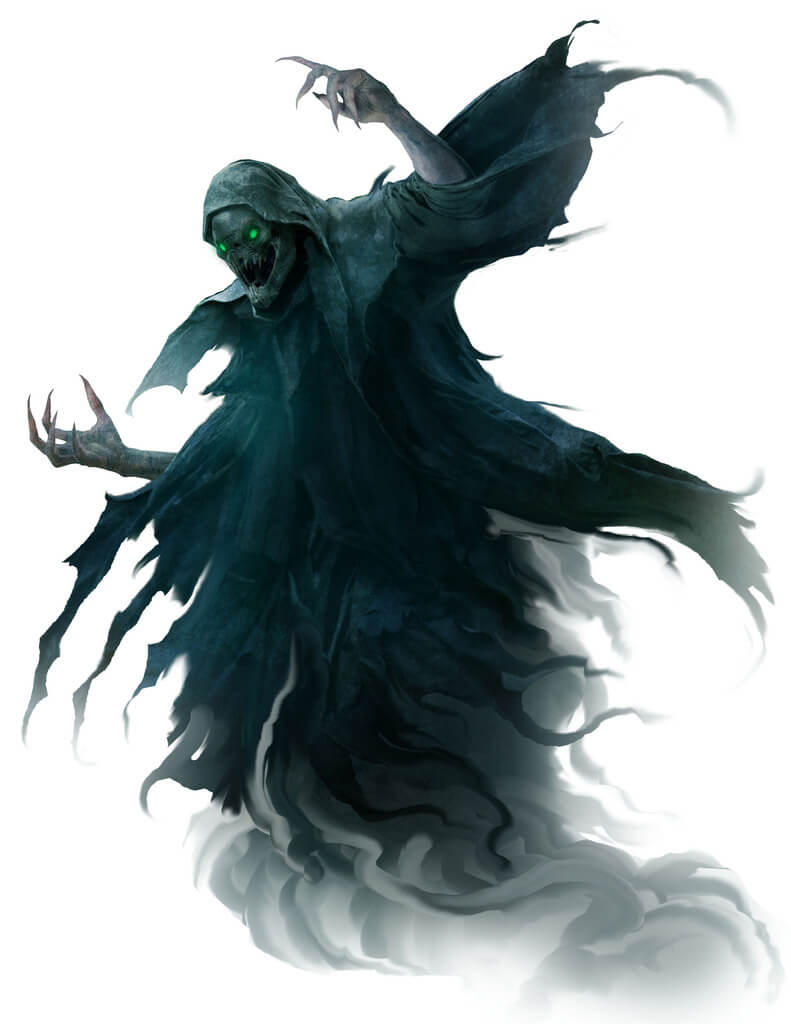 This doesn’t mean that Folklore is hard. In fact, I would say that with a good party of 4 characters or more, you should be able to survive, but be warned. Less then 4 characters is pretty much a hard mode for the game. The game isn’t particularly well skewed to handle smaller parties. You can of course get around this by having players play multiple PCs, but I know there are a lot of gamers out there who despise that sort of solution.
This doesn’t mean that Folklore is hard. In fact, I would say that with a good party of 4 characters or more, you should be able to survive, but be warned. Less then 4 characters is pretty much a hard mode for the game. The game isn’t particularly well skewed to handle smaller parties. You can of course get around this by having players play multiple PCs, but I know there are a lot of gamers out there who despise that sort of solution.
Combat is an odd duck in Folklore. For starters, there are two kinds of combat. Normal combat works itself out as a typical minis on a grid map affair. This is going to be familiar to anyone who has played any number of Final Fantasy Tactics inspired game. But then you also have skirmish combat. Skirmish combat reminds me a lot of the text and dice based combat from the Fighting Fantasy or Destiny Quest books. You basically just roll a lot of dice back and forth trying to determine how much damage you sustain before you get to move the game forward. Neither combat feels as fully developed or richly nuanced as what you may expect in a typical modern dungeon diving game. It feels a bit dated honestly, but that isn’t to say it is ever boring or unfun. In fact, I do like how the combat is designed as a way to break up the potential monotony of having too much combat. I’ve had my fair share of games where combat simply felt like I was going through the motions YET AGAIN. Folklore tries to keep players constantly doing something new and different and the dual combat system works well enough to keep the game moving in varied ways. I just wish that the combat engines were a tiny bit more interesting individually. Again, I’m not saying combat isn’t any good, but rather, this feels like something I would have been playing in the late 1990’s and you aren’t going to experience it as doing anything revolutionary. I can’t say this is a cardinal sin or anything because I’m a guy who wishes that Final Fantasy went back to using the ATB or simple turn based combat.
I obviously haven’t made it through every story in Folklore yet. The base game comes with 6 stories with 2 or 3 chapters each (each chapter is a solid gaming session). The big box expansion comes with another 9 stories that seem slightly longer and more challenging then the base game. There is a third expansion adding even more stories in PDF format. The icing on the cake though are the crafting and Rumor expansions that add oodles of extra content to spice up the game. If I were to look into buying Folklore, I would suggest trying out the P&P demo to test the water and if you think the game has legs, go nuts and just get these expansions out of the gate. I would also suggest taking a pass on the very expensive large neoprene map. I’m not sure if this is going to be widely available, but this version of the map is just too big to be practical for most game tables, and worse yet it comes folded up in the box, complete with creases.
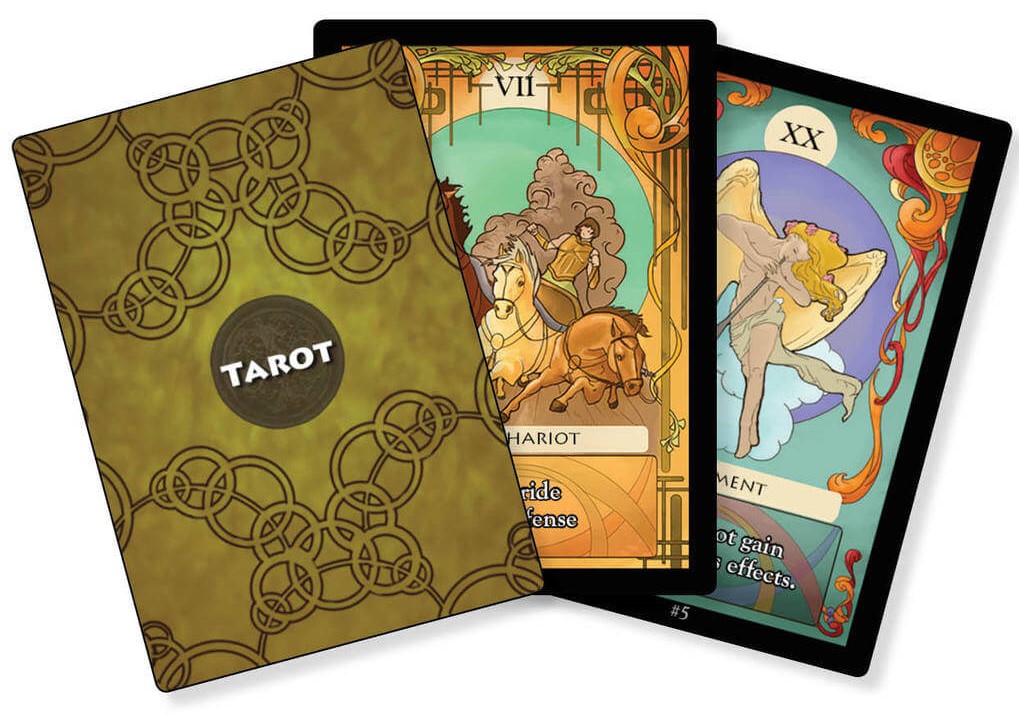 Player characters are always an important part of any good board game. Fantasy Flight’s Arkham Files games are an excellent example of how having well developed and diverse casts of player characters brings added immersion and enjoyment to a gaming session. Folklore generally handles its PCs very well. There is a diverse cast of male and female protagonists. When I say diverse, please understand that I am referring to their diversity in classes and abilities, not their racial diversity. Yes, everybody is white, groan. Characters have their own branching ability tree they will unlock as they level up, but even more interesting, each character has a special set of things they can do when visiting towns that is unique to that class of character. For example, if my telepath visits the Gypsies she can unlock all sorts of nifty options like buying special equipment only she can get. If my magician character visits the Gypsies he can put on a performance and earn some extra cash. If my Witch Hunter visits the Gypsies he is very uncomfortable and will probably get into trouble. The really cool result is that players will take these elements of game design and use them as jumping off points to roleplay even if they don’t mean to. When my party visits town everybody naturally runs off to take care of their own little errands and it makes for a neat little story experience.
Player characters are always an important part of any good board game. Fantasy Flight’s Arkham Files games are an excellent example of how having well developed and diverse casts of player characters brings added immersion and enjoyment to a gaming session. Folklore generally handles its PCs very well. There is a diverse cast of male and female protagonists. When I say diverse, please understand that I am referring to their diversity in classes and abilities, not their racial diversity. Yes, everybody is white, groan. Characters have their own branching ability tree they will unlock as they level up, but even more interesting, each character has a special set of things they can do when visiting towns that is unique to that class of character. For example, if my telepath visits the Gypsies she can unlock all sorts of nifty options like buying special equipment only she can get. If my magician character visits the Gypsies he can put on a performance and earn some extra cash. If my Witch Hunter visits the Gypsies he is very uncomfortable and will probably get into trouble. The really cool result is that players will take these elements of game design and use them as jumping off points to roleplay even if they don’t mean to. When my party visits town everybody naturally runs off to take care of their own little errands and it makes for a neat little story experience.
My big beef though with the player characters is that GBG makes a big deal out of having each PC have their own special gear they can buy in town. Think of this as the way each character can unlock their ultimate weapons and armor. Once you buy these cool special items, you don’t get a card for this new gear like you would with any other weapon or armor you get in the game. Instead, players are told to simply mark the new gear on their player sheet or to make their own tokens. I’m sorry, but that is utter tripe. This is a classic example of cutting corners. GBG should have cards that players can put in their tableau to show that they have these cool items and to serve as a reminder that they are there to be used (and to remind players that they take up space in their inventory). Obviously these cards shouldn’t go in the item deck, but it would have been very easy to have a separate deck of cards for these extra special items.
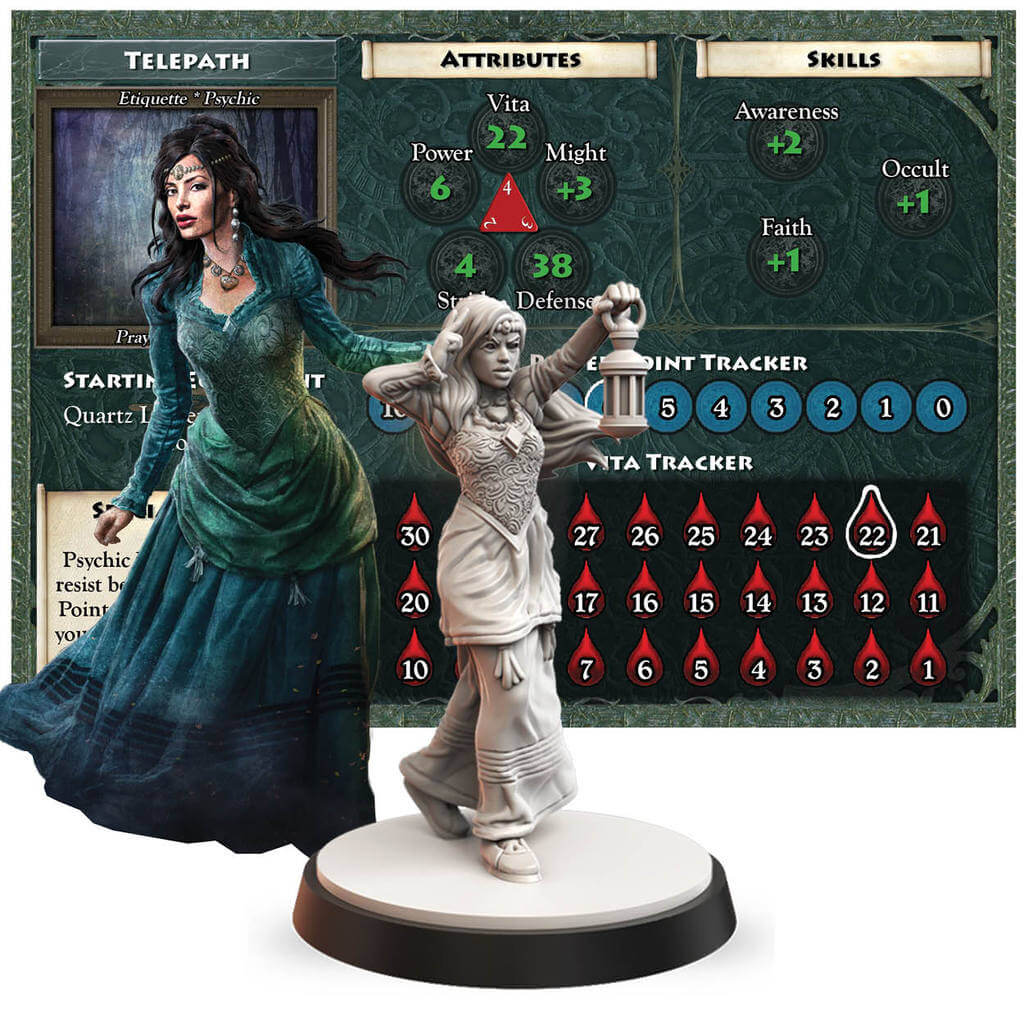
I do have a brief word of warning to you minis aficionados out there. The minis, while generally good, do have some pretty odd stinkers in the batch. The quality of the sculpts seems inconsistent, ranging from excellent to pretty bad. There seems to be some scale issues with some figures (especially the humanoid ones) and the Vampire mini has two right hands. Also expect to get out a bowl of hot water to fix all the bendy swords, staves, spears, and shovels you’ll come across. The majority of figures out of the box will need some work. Don’t expect CMON or FF quality, but at the same time, the minis are acceptable.
The most significant problem I have with Folklore is the editing and rules. I’m lumping these two items together, but really they are two separate issues. The editing is amateurish at best. Major typos are frequently found on prominent components like on player stat cards. Luckily most of these typos aren’t game breaking, but they are a huge annoyance, especially when they show up during a lengthy story passage. This of course always serve to break player immersion into the game, and is frankly something a professional publisher shouldn’t be allowing to happen in 2017. I am being generous when I describe the rules book as a hot mess that is barely functional. There was no professional editing or blind testing on the rules. The rules are broken into what I would describe as a quick start guide (designed to get you into the rules) followed by sections of more detailed reference rules you can turn to during play to flesh out any rules you pick up through the game play. The writing itself is terrible and if I didn’t know better I would have guessed it was a rough draft translated from a set of rules in another language. I would point to sections describing how visiting towns work, how fillable items work, how thrown weapons work, how diagonal movement/line of sight works, or how modifying items works. The language is ambiguous and without clear and detailed examples of how it works, players are forced to make guesses and hope they are correct. I found myself doing this A LOT in every game of Folklore I’ve played. There are so many fiddly little rules that even if the rules were better written, I suspect I would still get some things wrong from time to time. In real life I am a literal rules lawyer. I make a living reading rules and manipulating them to the benefit of my clients. I know how to critically read rules and if I may say so, I am damn good at my job. I’ve read Folklore’s rules cover to cover probably a half dozen times, and while I think I know how to play the game correctly, I can’t say I’m 100% comfortable with the rules.
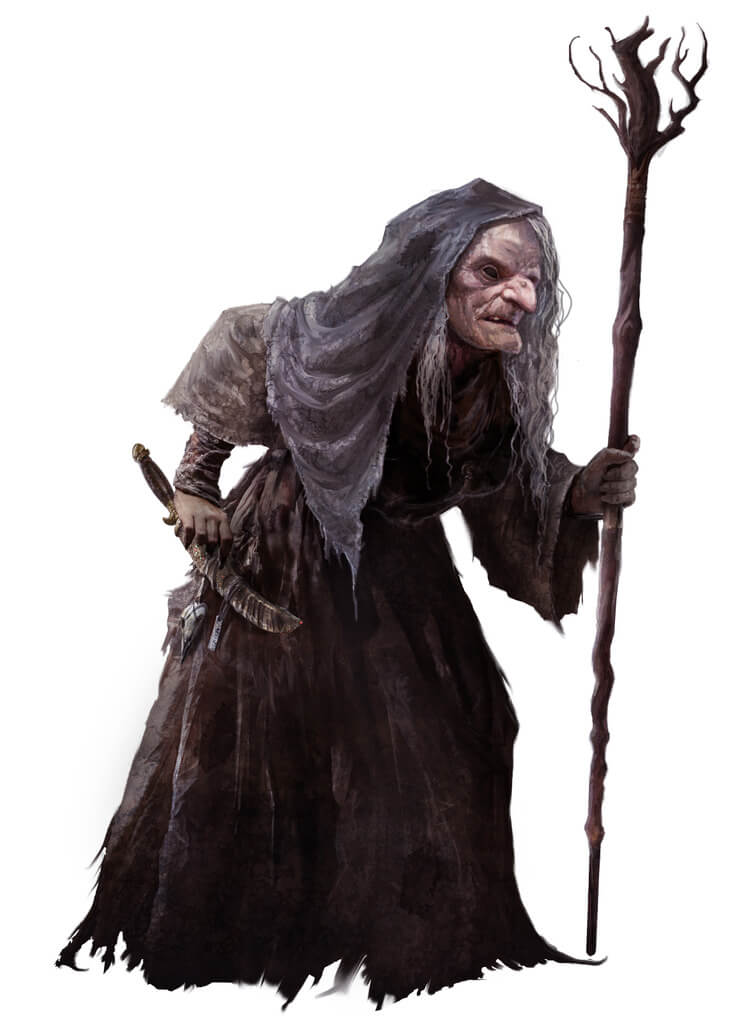 Now, you’d think I would hate this game for all the trouble I’ve had with the rules. Luckily, that isn’t the case. Folklore is such an excellent experience, that not even crappy rules can manage to get in the way of a good time. This is an extremely important point. If you want to enjoy Folklore for the wonderful story telling experience that it is, you are going to have to accept the rules for what they are and be cool with making judgment calls on the fly that may not be correct. Just know that you are always right if you are making a ruling to maximize the fun your group is having.
Now, you’d think I would hate this game for all the trouble I’ve had with the rules. Luckily, that isn’t the case. Folklore is such an excellent experience, that not even crappy rules can manage to get in the way of a good time. This is an extremely important point. If you want to enjoy Folklore for the wonderful story telling experience that it is, you are going to have to accept the rules for what they are and be cool with making judgment calls on the fly that may not be correct. Just know that you are always right if you are making a ruling to maximize the fun your group is having.
I really have come to adore Folklore for what it does well. Fans of story telling in games will find that Folklore stands out with games like Mansions of Madness 2.0, Near & Far, and Time Stories as a true accomplishment in narrative gaming. Folklore is a game that needs to be played, and I desperately hope that it finds an audience among influential game designers. Green Briar Games should be sending a copy of this game to Rob Daviau and begging him to consult on a legacy expansion (which would seem like a perfect fit for Folklore). Well, maybe they should first talk to Paul Grogan about finding an editor, but they should definitely be looking into figuring out how they can get Rob Daviau to at least consult on an expansion.
Folklore ultimately is an excellent game that just falls short of being a masterpiece. That sounds like a back handed compliment, but it shouldn’t be interpreted that way. Its my way of saying that you should buy this game with tempered expectations, and love it for what it is. Its also my way of telling YOU Green Briar Games, that you do good work, but I want more from you. I want more Folklore, and I want you to make it the masterpiece that it can be. The story is rich, immersive, and highly satisfying. The pacing/flow of the game play is constantly changing modes and never feels like it gets stuck in a boring rut. The art of Stephen Gibson is truly stellar (he is up there with the likes of some of the best artists in board games people!). Character growth (aka, the game’s positive feedback loops) is a bit slowly paced, but it is ultimately very satisfying. I can’t forgive though the places where GBG cut corners. I want my special equipment cards. I want better rules and editing. I want a bit more development work done with the combat design. And while I’m putting together my wish list, I want Rob Daviau to make this a legacy game. I can be passionate about these short comings because I ABSOLUTELY LOVE Folklore for what it already is, which is a memorable game experience that has given me things I will be talking about for years to come.
Folklore is no faithless preacher, my friends. Its a mean mother loving servant of God!
BGG Score – 9.0 (for those who can’t forgive the shoddy editing and rules, 7.0)
Scott Sexton
Scott Sexton is an avid boardgame enthusiast who regularly posts reviews on BoardGameGeek - You can subscribe to his Review Geeklist here and check out his contributions to Brawling Brothers here.

